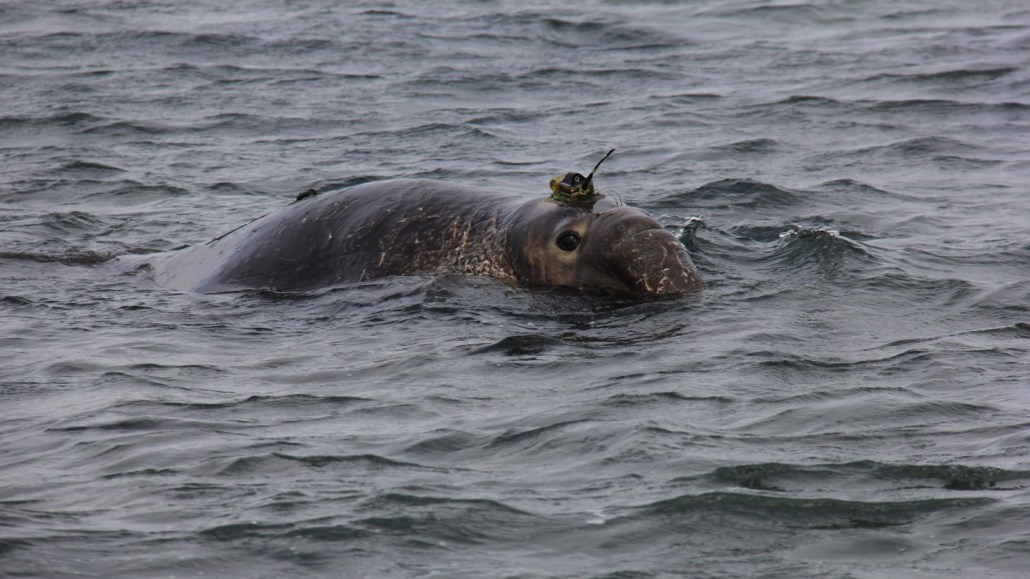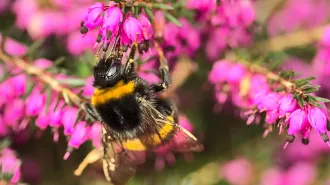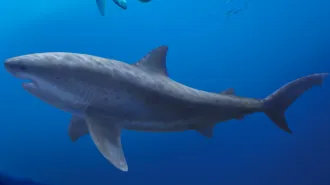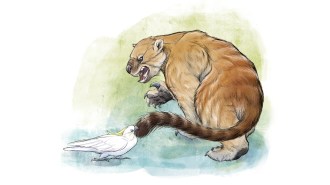Male elephant seals aim to get huge or die trying
Only the largest males get to mate, so the pressure to eat and grow is extreme

A male northern elephant seal (Mirounga angustirostris) surfaces in the North Pacific. The instrument on its head logs the animal’s depth and geographic position.
Stephen Trumble, NMFS permit 19108
If you’re a male northern elephant seal, your car-sized bulk is crucial to your genetic legacy, since only a fraction of the very largest males will have access to mates. Now, scientists have found that male elephant seals are so driven to eat and grow that they take on great personal risk and are much more likely than females to die while foraging for food.
The findings, described in the January Royal Society Open Science, reveal a dramatic divide in how and where male and female elephant seals mostly feed and how their different mating strategies play a role in choosing those locations.
Male and female northern elephant seals (Mirounga angustirostris) look quite different from each other. Females can weigh hundreds of kilograms, but males are truly humongous, growing three to seven times as large as females. Despite these physical differences between the sexes, much of the scientific research has targeted just females, says ecophysiologist Sarah Kienle at Baylor University in Waco, Texas.
Kienle wanted to know how the substantial size differences between the sexes impact their feeding behaviors.
As part of a long-term, ongoing monitoring project of elephant seals at Año Nuevo State Park in California, Kienle and colleagues attached depth loggers and satellite and radio transmitters to more than 200 seals from 2006 to 2015. The researchers measured the seals’ fat stores and used this information, along with the animals’ location and depth data, to determine how and where they were foraging and how well their efforts converted into blubbery heft.
The team found that the two sexes hunt for food in very different places. Females spent most of their foraging time in the open ocean, diving deep for prey, while males stuck to shallower, nearshore habitats, feeding continuously on prey on the continental shelf. This helped males accumulate six times as much mass, on average, as females, gobbling up calories more than four times as fast.
But there’s a cost to that shallow smorgasbord. Males were six times as likely as females to die while foraging, Kienle and her team found. It’s a pattern that was apparent even during data collection.
“I could have told you that from just putting out instruments on males, that it was a 50 percent chance whether or not I was going to get that instrument back,” Kienle says. “And that’s not the case for females.”
Why the males are dying at such a higher rate isn’t clear, but Kienle suspects predation. Throughout the seals’ range in the North Pacific, orcas and great white sharks patrol nearshore waters.
The waters of the continental shelf support more plankton, fish and other sea animals than deeper waters, which in turn support hungry seals and sea lions. It’s a relationship noticed by mammal-eating apex predators too, says Andrew Trites, a zoologist at the University of British Columbia in Vancouver, who was not involved with the research.
“That’s where the dinner bell is ringing all day long,” he says.
The risk may be more than worth it to the males. Male and female elephant seals both reach sexual maturity around age 3 to 4, Kienle says. But while females can have pups every year or two for much of their 20-year life span, bulls live half that long on average, and don’t typically reach their peak poundage until later in life. They then monopolize mating access to a group of females only if colossal enough to intimidate or fight off other bulls (SN: 7/20/17).
This divergence in reproductive arrangements appears to encourage two different feeding behaviors among the seals. Females are content to avoid the shallow buffet and the jaws of nearshore terrors, aiming instead to eat enough to repeatedly rear offspring over time. Males, meanwhile, search out the faster growth rewards but do so at an increased risk of death.
The males are “the ultimate gamblers,” Trites says. “If you’re a male, then you’re going to roll the dice. And it’s all or nothing because the payoff is huge.”







